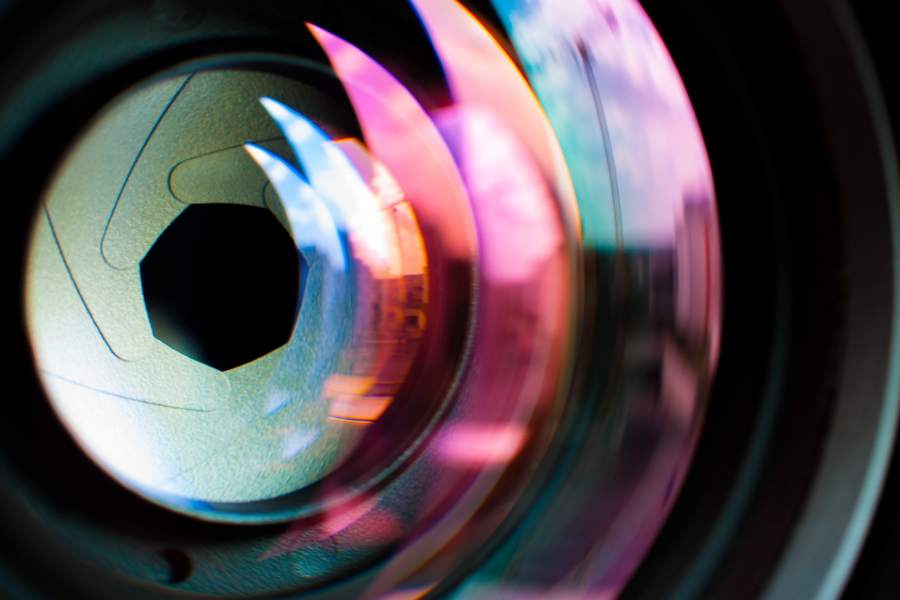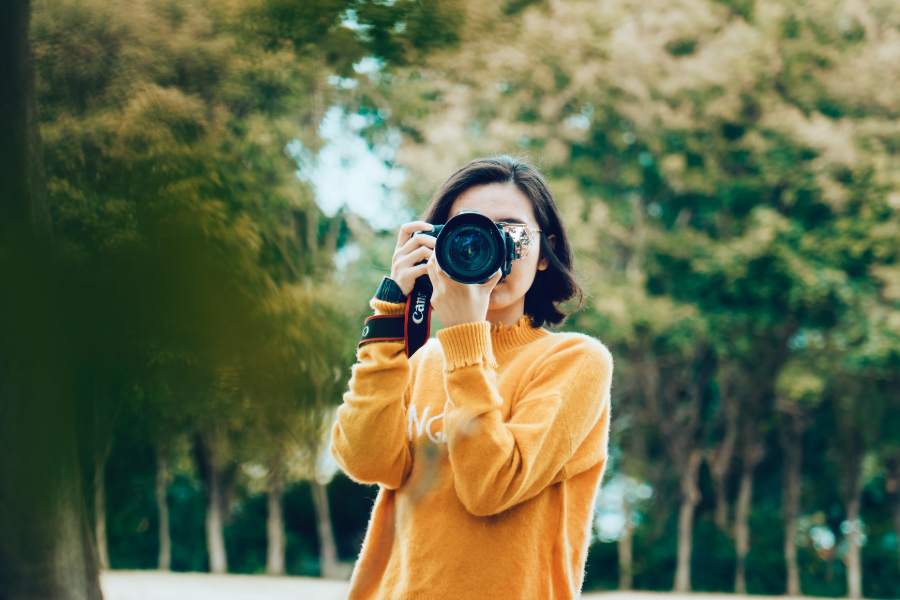
As an Amazon Associate we earn from qualifying purchases.
Photography is a beautiful art form that has been around for over 200 years. All types of
Quick Navigation
Shutter speed refers to how long the camera shutter remains open when taking a picture. When you take pictures at night or in low light settings, your shutter speed needs to be longer so more light can hit the sensor and create an image.
You can measure shutter speeds in seconds and fractions of seconds. A fast shutter speed will freeze any motion or action with crisp detail, although it can make your subject appear blurry if they're not still during the exposure time.
Shutter speed is measured in time units such as several seconds or fractions of a second. A slower (or lower) shutter speed allows more light to hit the film strip (for an analog camera) or camera sensor.
Conversely, a faster (or higher) shutter speed permits less light to hit the film strip or the camera sensor.
To determine the base shutter speed of your camera, use the focal length of its camera's lens. If you have a 50mm lens, start using a shutter speed of at least 1/50 as you work your way up from there.
The shutter speed controls both the exposure and motion of the image.
According to VHT Studios' analysis, about 32 % of homes sell faster due to professional

That is where Photography For Real Estate comes to the rescue in helping both interior and real estate photographers succeed in their work.
The best way to find out what your photos will look like with different shutter speeds is by experimenting. Try taking many pictures at various exposures and then comparing them on your computer screen after they have been developed.
This way, you can easily see which ones turned out best.
If you take a picture in broad daylight or any other situation with plenty of light, the shutter speed will be very short.
For example, if your scene has an exposure value (EV) of 15, your rule for working out what shutter speed to use would be "the inverse," which means that the shutter speed should be 15 seconds long.
If you take a picture in low light conditions, such as at night or inside with the lights off, your shutter speed will need to be much longer.
For example, if it's dark out and your scene has an EV of 12, I can use our rule to find "the inverse" to work out that the shutter speed should be around 48 seconds long.
Your camera automatically determines the shutter speed as well as the aperture. When shooting in Shutter Priority or Manual (S or TV), you can manually set the shutter speed. You'll be able to use your creativity much more freely than before.
Shutter priority is an excellent alternative for people wanting to get away from Auto while still having the option of adjusting the aperture (though it's also frequently employed by professionals shooting in changing light conditions).
The shutter speed may be viewed on the top LCD screen of the DSLR cameras, through the viewfinder, and on the back screen. The shutter speed may be changed on a per-camera basis, and some allow you to choose which control wheel does this.
Aperture priority mode is the usual go-to for photographers, although shutter priority mode gives you control over how much light makes its way into the camera. When using aperture priority mode, your aperture size determines how much light can come in; shutter priority mode is all about the speed.
This is good for astrophotography and also for motion freezing—stopping action. If you're trying to capture fast-moving subjects in low light, then this is the mode you will use.
Shutter priority mode is all about letting you control how slow or fast your shutter speed needs to be, which enables you to capture a lot of light in an image.
The shutter speed you choose depends on the circumstances and locations you're shooting. A high shutter speed will be the best alternative if you want to freeze motion while capturing fast-moving things. This will reduce the amount of light that reaches the sensor.
Therefore you'll either need to change your shutter speed or alter your aperture and make it wider.
The other significant benefit of shutter speed is its impact on exposure, which relates to how bright an image is. When using a long shutter speed, the camera sensor collects a lot of light, resulting in a relatively bright photograph.
By using a fast shutter speed, the camera sensor gets exposed to a smaller fraction of light. The result is a darker photo.
However, the brightness of an image is not determined solely by shutter speed. There are also ISO and Aperture, along with the scene's actual brightness that's ahead of you. You have some leeway when selecting a shutter speed; however, you must choose your other settings with extreme care.
A Long shutter speed is typically above one second. At this point, you'll require a tripod to obtain sharp images. Long shutter speeds would be used for specific sorts of low-light or night
If there is any motion in your scene when using long shutter speeds, it'll appear very blurry.
A tripod can help to avoid a camera shake, though it may not be enough. If you have a prolonged shutter speed or an unsteady hand, the image will still be plagued by blur even with the steadiest of tripods.
Even if your subject is perfectly sharp, you're more likely to get blurry photos on a tripod, though that's all about the relationship between the subject matter and camera. It has everything to do with:
The main advantage of using a tripod is that you can avoid dealing with the blur on your own. You can freely adjust your composition with a tripod without worrying about camera shake or how steady your hand is. If you move around, the tripod stays put. This comes in handy when you're taking fast action shots like players running and kicking the ball in a soccer game.
Using a flash with slow shutter speeds is always an option, although it can cause problems. When you use a flash, your subject looks brighter, and any background appears darker—it all depends on the relative intensity of the light from your flash to the existing natural lighting.
This makes shots taken at extremely slow shutter speeds look better when there's no flash. If you use flash, then your subject will look good, although the background will be too dark to see much of anything.
So if you're setting up a shot at extremely slow speeds and you want some visual context, turn on the flash only after the shutter speed has already slowed down enough that there's plenty of natural light on your subject's surroundings.
In the old days, before digital cameras were everywhere, you would have had to use flash with shutter speeds no slower than 1/60th or 1/125th of a second. This made it difficult for photographers to get good exposure to low lighting as they had to crank the ISO way up.
Standards have changed over the years. Although, check your manual if you're in doubt about whether your camera can take photos with exposures slower than 1/60th or 1/125th of a second. You may have very different standards these days.
If you're looking to freeze any movement in your shots, you need a fast shutter speed. For standard photos, that might be 1/125th or 1/250th of a second. If you want to snap images before the subject gets out of the frame, you need a faster shutter speed.
From there, sports photographers have their standards for what qualifies as being "fast." A good benchmark is 1/500th of a second, though that's just a starting point. If you're photographing fast-moving subjects, then your best bet is to experiment until you've found the proper settings.
When you want to capture motion, your shutter speed needs to be slow enough, and the movement isn't frozen in place. This is because something that's "frozen in time" has no apparent motion blur. On the other hand, something with motion blur looks like it's on the move.
If you want to capture something with motion blur, your starting point is 1/15th of a second. If you're using shutter speeds slower than this and still getting good results, try not to go any slower. There will always be a certain amount of trial and error here.

As an example, think about photographing a gentle waterfall with a slow shutter speed. You don't want the water to look like a fast-moving blob. Instead, you want it to look smooth and fluid, even if there is still some motion blur in play. The best thing to do is slow your shutter speed down even further.
There are some great examples of motion blur online, especially on Flickr. Look for images with "drip" in the title, and you'll see what I mean.
Sometimes while photographing action or movement, even a fast-moving subject can appear blurry. This might be because your camera is moving around while you try to capture the image, or it could be because you don't have a tripod and everything is happening too fast.
Using stabilization systems can help with this by compensating for your movement so that your final image appears clear and crisp. If you're photographing birds in flight and you can't use a tripod, then this might be your best bet.
These systems work through either optical or electronic means. Optical stabilization systems rely on lenses that physically move to compensate for movement and help keep images sharp. Electronic stabilization systems do the same by shifting camera settings like aperture, ISO, and shutter speed to compensate for movement.
When you use a slow shutter speed, your photo will have the correct exposure. However, one crucial consideration is that things in motion might be blurry if they move when your camera's sensor is being exposed to light.
The best way to see this effect yourself is by taking a picture of running water at an extremely long shutter speed. The result will be that the water is much more blurry than it would have been if shot with a fast shutter speed.
It's not just running water that becomes less sharp at slow shutter speeds; every moving thing in your photo might become blurred, depending on how fast it's moving, how long your shutter is open, and what direction it's moving in relation to the camera.
This depends on the amount of light present in the scene. For an outdoor setting during a sunny day, you will need a quick shutter speed like 1/500 s. For an indoor environment, you will need a slower shutter speed, like 1/100.
You'd want to use aperture priority and choose a fast shutter speed. This will ensure that your photos aren't too dark, and remember that you can use burst mode to take multiple pictures quickly.
Photographers can use a faster shutter speed to ensure that anything with motion blur is not captured when being photographed. For example, if you're photographing a busy river scene, you might want to use a fast shutter speed to ensure that your images aren't blurry.
Understanding the significance of shutter speed will allow you to unlock your photographic potential and achieve career success as a photographer. Try out different targets and shutter speeds during the day or at night to perfect your technique.
